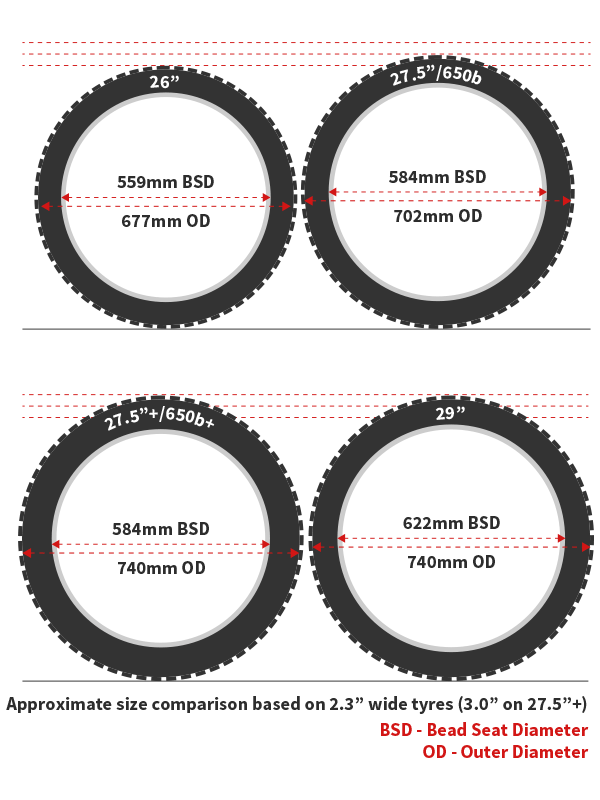As you can imagine, wheels are an essential component of a bike.
Not only do bike wheels allow us to roll smoothly while cycling, but they also provide dampening from lumps and bumps as well as providing traction to the surface we’re riding.
Many cyclists don’t understand how to measure a bicycle wheel, or how to measure a bike tire so I put together this bicycle wheel size guide to help you determine your current wheel size and what size bike tires you need for your wheels.
Riding with wheels that are too big or small can cause damage to your bike, so pay attention to the steps below, and you won’t have any issues!
Ready to learn how to measure a bike wheel? Let’s hit the road.
Add a header to begin generating the table of contents
Based on how much time you want to allocate to measuring your bike wheel, you can take a few different approaches.
You could attempt first to contact the manufacturer or the shop where you purchased your bike. Retailers and manufacturers have a record of all measurements and sizing information.
But be warned, retailers can be a nightmare to get hold of and often take a long time to reply.
If you have a bike tire on your wheel, you can generally find required measurement information on the tire wall (side of tire – see picture below).
Tire walls usually display the size as determined by the European Tire and Rim Technical Organization, or ETRTO and will look something like the picture below.
Bike tire wall size pictureIf you can’t find the sizing on the wall of your tire, don’t panic. Below you’ll find several methods to help you understand how to measure your bike wheel.
Alongside understanding more about your bicycle’s rim, a few of the methods below will also help you determine which tire size your wheel needs.
These steps are beneficial in those cases where you do not have a bike tire or have custom wheels, as the measurements you seek may not be readily available to you.
Typically there are two main approaches for how to measure bicycle wheel size.
Just before we begin, if your wheel doesn’t have a tire fitted, click here to move on to the next step.
The quickest way to determine your bike wheel size is the standard method.
The standard method measures the tire width and tire diameter in inches.
Let’s start with a step by step guide on completing the standard method of bike wheel measuring:
Bike Wheel RadiusBike Tire Width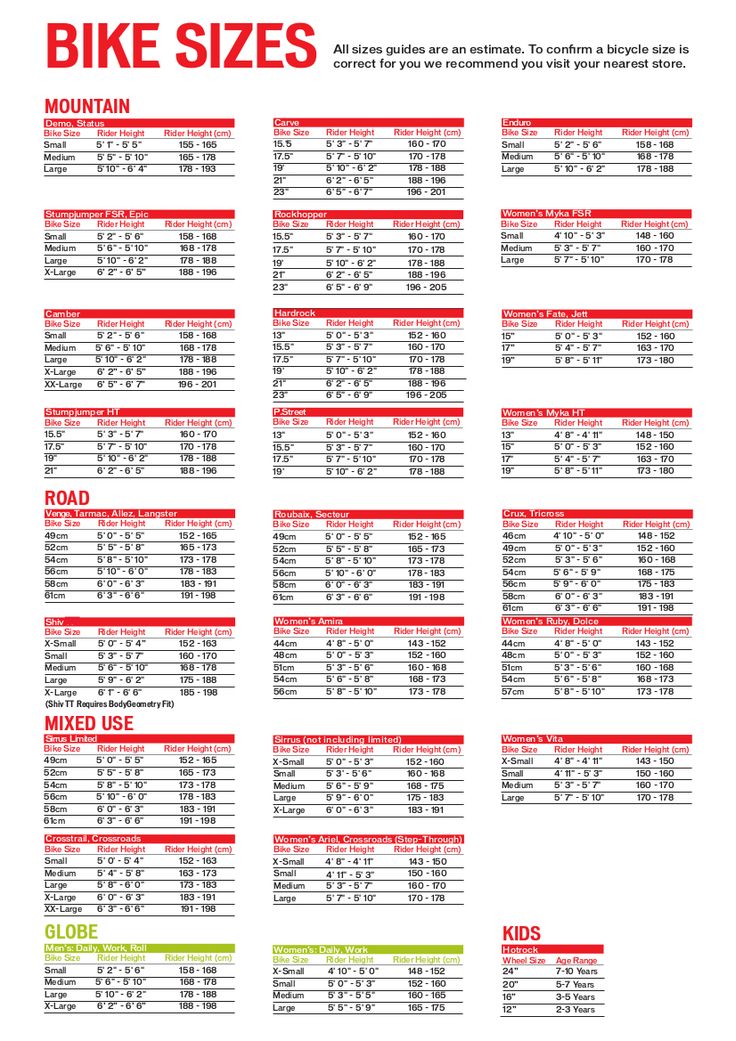
The most accurate way to measure bike tire size is through the ISO method.
ISO stands for the International Organization for Standardization, a measuring system that uses millimetres to gain the most accurate sizing possible for a bike tire.
Using this method, one measures the width of the tire and the inner diameter, or bead seat diameter.
Towards the end of the article, you’ll find a chart allowing you to compare the different ISO wheel sizes and what types of bike or vehicle each size of wheel is used with. Click here to view the chart.
Here is a step by step guide on how to measure a bike tire using the ISO standardization method.
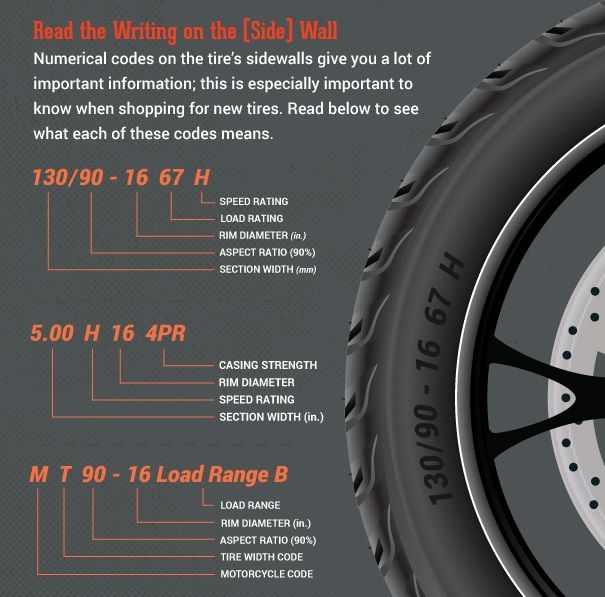
If you do not have your bike’s tire to hand, you can determine the tire size by measuring your bike’s rim width in millimetres as well.
Based on the average tire and wheel combinations currently on the market, the following charts illustrate the coinciding tire size and rim length.
This bike wheel has an ISO 622mm with an internal bead seat width of 15mm. Not all wheels will display their measurments!Many rims will display their size somewhere, but some rims may be missing this measurement.
If you cant find. measurement on your wheel’s rim, follow the easy steps below that will help you determine the appropriate tire sizes your rim can handle.

It’s important to note that these charts are based on average measurements; therefore, if possible it’s a good idea to double-check with your wheel’s manufacturer or retailer to confirm all compatible tire sizes.
It’s also important to consider the tire clearance on your fork and rear triangle. If you choose a tire that’s too wide you can end up damaging your frame and a tire that’s too thin can easily cause damage to your rim and inner tube.
| Tire Size Compatibility | Internal Rim Width |
|---|---|
| 23 - 25c | 13-15, 17-19mm |
| 25 - 28c | 13-15, 17-19, 20-21, 22-23mm |
| 30 - 33c | 17-19, 20-21, 22-23, 24-25mm |
| 33 - 35c | 17-19, 20-21, 22-23, 24-25mm |
| 38 - 40c | 20-21, 22-23, 24-25mm |
| 40 - 43c | 20-21, 22-23, 24-25mm |
| 43 - 45c | 22-23, 24-25mm |
| 45 - 48c | 22-23, 24-25mm |
| 48 - 50c | 24-25mm |
| Tire Size Compatibility | Internal Rim Width |
|---|---|
1.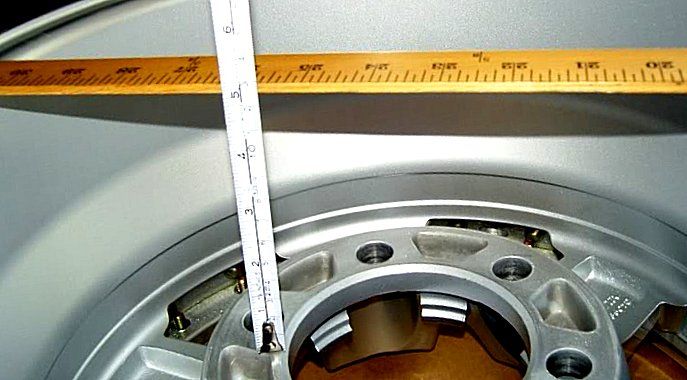 9" Tires 9" Tires | 19-23mm |
| 2.0" Tires | 19-24mm |
| 2.1" Tires | 19-28mm |
| 2.2" Tires | 20-30mm |
| 2.3" Tires | 21-33mm |
| 2.4" Tires | 23-34mm |
| 2.5-2.7" Tires | 25-35mm |
| 2.8-3.1" (plus) Tires | 22-23, 24-25mm |
The process of measuring a kid’s bike wheel and tire size follows similar steps to those shown above, but kid’s bike tires are measured in inches and are understandably smaller than those of an adult bike.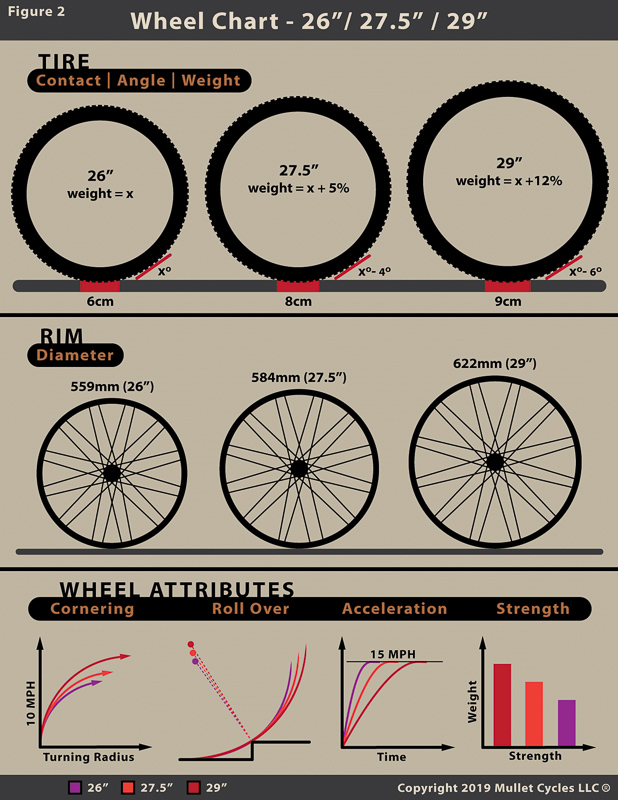
I’ve put together a simple guide for everything to do with kid’s bike sizing.
If you’re looking to measure the wheels on a kid’s bike, or are looking to determine which size bike is best for your kid, have a read of this guide, which includes all of the bike and wheel size charts you’ll need!
Follow the steps within this guide closely, as a poor fitting kids bike can put you child off cycling for good.
Measuring your wheel’s circumference for a bike computer is an important task that will determine the accuracy of the data your computer provides.
To simplify the steps required to measure your wheel’s circumference for a cyclometer, I’ve put together a simple bike wheel circumference guide.
These three simple methods will help you accurately measure your wheel’s circumference.
You won’t need any specialist equipment, apart from a measuring tape.
This may look interesting, but it's one of the easiest ways to measure the circumference of a bike wheel for a bicycle computer!Each type of road bike and mountain bike comes with a different set of average wheel sizes. In general, each of these sizes offer a unique set of benefits and drawbacks.
In general, each of these sizes offer a unique set of benefits and drawbacks.
The most common size wheel for a road bike is 700c, and has been the standard size for a number of years.
The 700 refers to the wheel’s diameter of 700 mm, while the “c” is an old French width code for tires.
With “a” characterized as the most narrow width and “d” at the widest, “c” refers to a generally wider size.
Mountain bike wheels come in three main sizes: 26 inches/559 wheels, 27.5 inches/650b wheels, and 29 inches/622 wheels.
The smaller, 26-inch mountain bike wheels were once considered standard size and are more lightweight and agile than larger sized wheels.
Despite their popularity in the past, 26-inch wheels are no longer the standard, as larger wheels have a better grip, traction, and durability and have therefore become more popular.
Both the 27.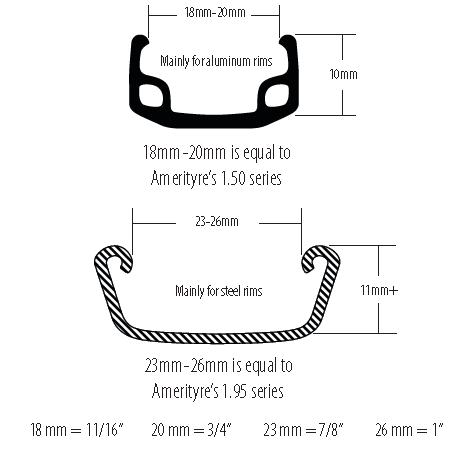 5-inch and 29-inch wheels offer a smoother and more controlled ride while sacrificing some of the acceleration capabilities of a 26-incher.
5-inch and 29-inch wheels offer a smoother and more controlled ride while sacrificing some of the acceleration capabilities of a 26-incher.
ISO otherwise known as the International Organization for Standardization developed the ISO wheel size system, which is universal and simplifies the once confusing task of finding the right size wheel for your bike.
The ISO standardization system uses two different numbers, that can often be found printed on the tire or rim walls.
The second number displayed in ISO tire size is the important one and represents the wheel’s bead seat diameter (as shown in the ISO size chart below).
If your wheel rim or tire has no size markings, you can use this ISO wheel size chart after measuring your wheels, to cross-reference and understand more about the size of your bike’s wheels.
| ISO Bead Seat Diameter | Traditional Sizings | Applications | |
|---|---|---|---|
| 137mm | 5. 4" 4" | 8 x 11/4 | Wheelchairs |
| 152mm | 6" | 10 x 2 | Wheelchairs |
| 203mm | 8" | 12 1/2 x various | Scooters (children's) |
| 254mm | 10" | 14 x 2.00 | Various (children's) |
| 305mm | 12" | 16 x 1.75 - 16 x 2.125 | Folding bikes, some recumbents |
| 317mm | 12. 5" 5" | 16 x 1 3/4 | Schwinn (children's) |
| 337mm | 13.25" | 16 x 1 3/8 | Very rare bike tire |
| 340mm | 13.4" | 400 A | Folding bikes, European bikes (children's) |
| 349mm | 13.75" | 16 x 1 3/8 | Folding bikes, recumbents, bikes (children's) |
| 355mm | 14" | 18 x 1.5 - x 2.125 | Folding bikes, bikes (childrens) |
| 369mm | 14. 5" 5" | 17 x 1 1/4 | Moulton bikes |
| 390mm | 15.35" | 450 A | European bikes ( children's) |
| 406mm | 16" | 20 x 1.5 - x 2.125 | BMX, bikes (children's), folding bikes, recumbents |
| 419mm | 16.5" | 20 x 1 3/4 | Schwinn (children's) |
| 440mm | 17.3" | 500A | European bikes (children's), folding bikes |
| 451mm | 17.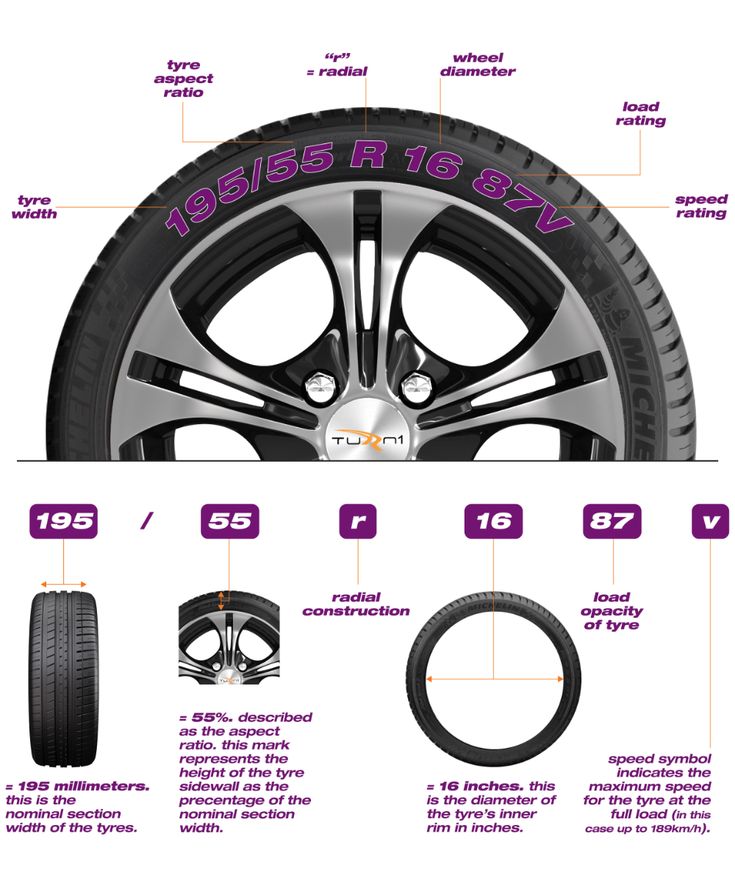 75" 75" | 20 x 1 1/8; x 1 1/4; x 1 3/8 | Bikes (children's), BMX, recumbents, folding bikes |
| 457mm | 18" | 22 x 1.75; x 2.125 | Bikes (children's) |
| 490mm | 19.3" | 550 A | European road bikes (children's) |
| 501mm | 19.75" | 22 x 1 3/8, 22 x 1.00 | British bikes (children's) |
| 507mm | 20" | 24 x 1.5- x 2.125 | Mountain bikes (children's), cruisers |
| 520mm | 20.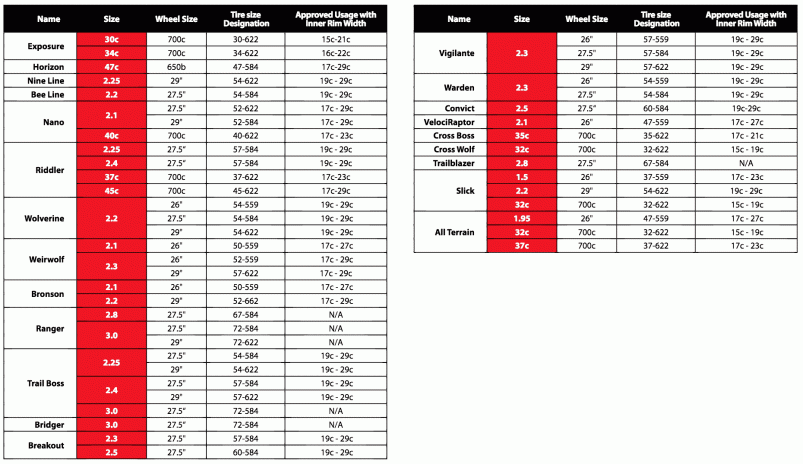 5" 5" | 24 x 1, 24 x 1 1/8, 24 x 1 3/4 | Schwinn bikes |
| 540mm | 21.25" | 24 x 1 1/8, 24 x 1 3/8 (E.5), | British bikes (children's), wheelchairs, Japanese women's bikes |
| 547mm | 21.5" | 24 x 1 1/4, 24 x 1 3/8 (S-5) | British bikes (children's), Schwinn bikes (children's) |
| 559mm | 22" | 26 x 1.00- x 2.125, fatbike tires up to 5 inches wide | Mountain bikes, cruisers, fatbikes, Schwinn bikes |
| 571mm | 22.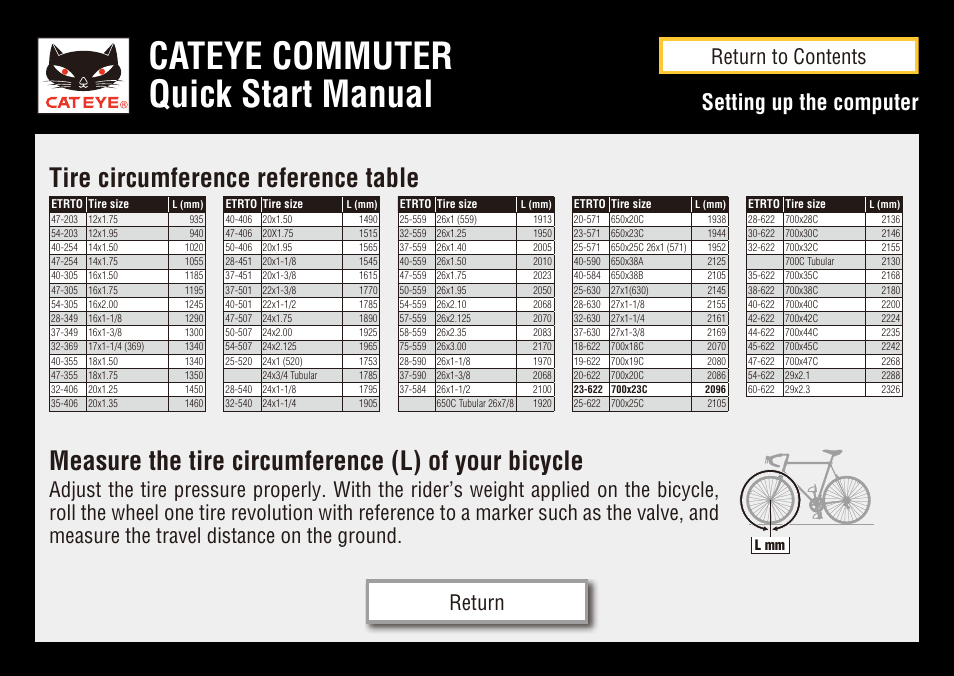 5" 5" | 26 x 1, 26 x 1 3/4, 650 C | Cannondale bikes, wheels for shorter cyclists, Schwinn bikes |
| 583mm | 22.95" | 700 D | GT bikes |
| 584mm | 23" | 650B, 26 x 1 1/2, 27.5 | French bikes, tandem and touring bikes, Raleigh & Schwinn mountain bikes |
| 590mm | 23.25" | 26 x 1 3/8 (E.A.3), 650 A | French & Italian bikes, English 3 speed bikes |
| 597mm | 23.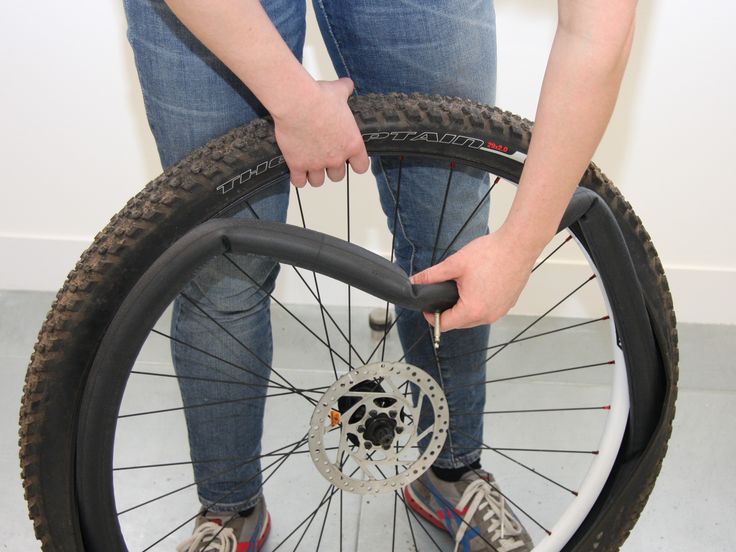 5" 5" | 26 x 1 1/4, 26 x 1 3/8 (S-6) | British bikes, Schwinn bikes |
| 599mm | 23.6" | 26 x 1.25, x 1.375 | Old US bikes |
| 622mm | 24.5" | 700 C, 28 x 1 5/8 x 1 1/2, 29 inch, 28 x 1 1/2 F.13 | All bike types, Canadian bikes (F.13), |
| 630mm | 24.8" | 27 x anything (not 27.5), 609mm | Rare Danish bikes, old road bikes |
| 635mm | 25" | 28 x 1 1/2, 700 B, 28 x 1 5/8 x 1 1/2 | European roadsters, old Swedish bikes |
| 686mm | 27" | 32 inch | Unicycles, Custom bikes |
| 787mm | 31" | 36 inch | Unicycles, Custom bikes |
How do you remove a bike wheel?
The process of removing a bike wheel varies based on whether you wish to remove the front or back wheel.
Remove the front wheel by releasing the brake, flipping the bike over, opening its quick-release or unscrewing the wheel nuts, and pulling it off the fork.
Remove the back wheel by shifting the chain down onto the smallest cog, opening the break, loosening your quick release or wheel nuts, then pull the rear derailleur back and remove the wheel at the same time.
Are bike wheels universal?
Bike wheels are not universal.
As bikes come in many different sizes, you’re limited with what size wheels you can use with a bike.
Usually, you’ll be able to make minor adjustments to the size of your wheels or tires, but wheels that are too big or small can easily damage your bicycle.
Can you put a road bike wheel on a mountain bike?
Putting road bike wheels on a mountain bike frame can be done and is a popular option for many commuters who cycle to work in the city but switch back to MTB wheels to hit the trails.
Just remember, as the designs of road and mountain bike wheels vary drastically, you’ll probably need to make adjustments elsewhere on your bike!
But yes, putting road bike wheels on a mountain bike is entirely possible!
Can you put a mountain bike wheel on a road bike?
For improved aerodynamics, the frame of a road bike is typically narrower and offers less wheel clearance than a mountain bike.
Due to the reduced wheel clearance road bikes typically offer, the wider tires and wheels that accompany a mountain bike are not usually compatible with road bike frames.
That being said, some slimmer 29-inch mountain bike wheels with narrow ties may fit on a road bike that takes 700c wheels.
However, cycling with wheels that are too big can end up causing damage to your bicycle.
If in doubt, don’t risk it.
I hope you found the content within this short article helpful. You should now understand exactly how to measure a bike wheel and how to measure a bike rim for a tire.
If I’ve left any of your questions unanswered, leave me a comment down below and I’ll get back to you straight away.
As always, make sure to use a good quality bike lock to secure your bike, when leaving it unattended.
If you’ve been wondering which size bike frame fits you best, have a read of this short guide, which will help you select the most suitable bike size in a few quick steps.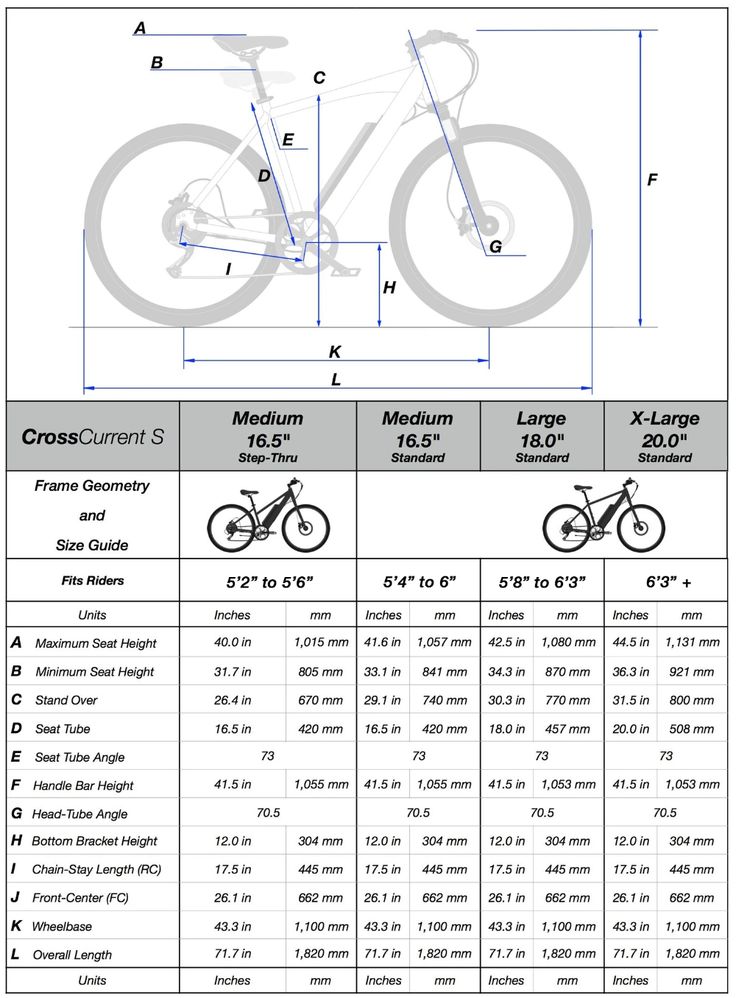
Lock it or lose it.
Ciao for now.
Do you want to get a new bike, upgrade your old one, and ensure you get the sizing right? If so, you should know that the bike wheels always have to fit either way.
Unfortunately, knowing how to measure bike wheel size can seem overwhelming to some. But the truth is that it’s not rocket science. In fact, with a few simple tools, you can do it at home.
You don’t have to use a bicycle wheel size chart to measure your bike wheels (although it will give you a good starting point). All you need are a few items and the methods we’ll show you now.
Here are three methods on how to measure bike tire size:
Table of Contents
To measure bicycle wheel size, stand the bike on its own or ask a friend to hold it steady for you.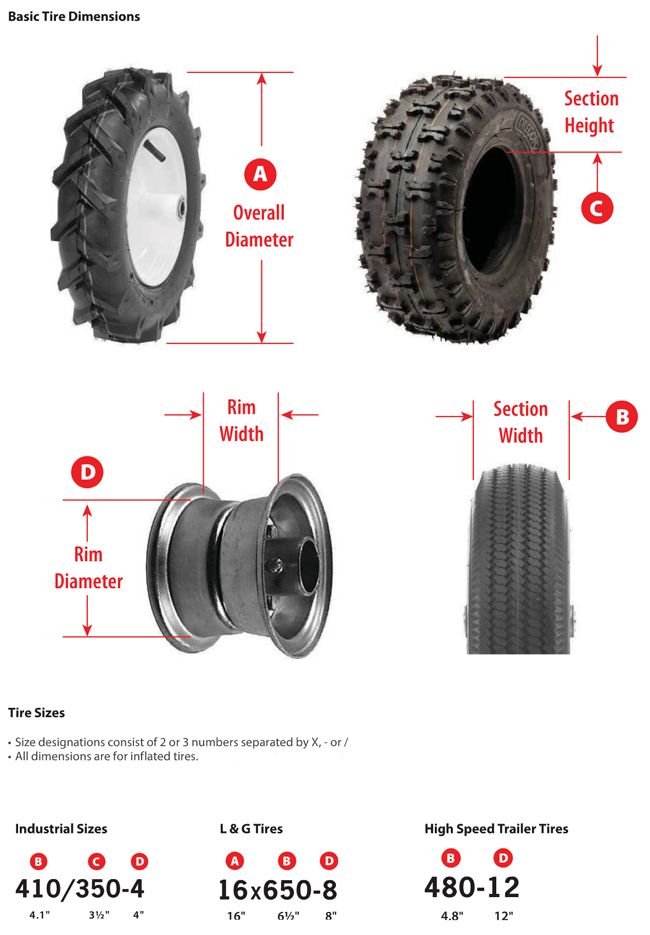 You’ll need the bike upright to measure the bicycle rim size without hardship.
You’ll need the bike upright to measure the bicycle rim size without hardship.
If you’re measuring your bike on your own, use sturdy steel tape so you can measure with one hand while holding the bike steady with the other.
Step 2: Measure the RadiusThe wheel radius is the distance from the wheel’s center to the tire’s edge.
To measure it, place the end of the measuring tape at the edge of the tire and read the number where the center meets the tape.
If you don’t have a tape measure, you can also use a piece of string or paper. Make sure that whatever item you’re using is long enough.
Now double the figure to find out its diameter.
Step 3: Measure the WidthThe width is the distance between the flat part of the tire and the tread from one side of the wheel to the other.
To measure the width of the bike wheel, place the end of the measuring tape at one side of the wheel’s tread and measure to the other side.
Again, you can use a piece of string or paper to measure the width. However, since it’s only a few inches, you can get away with using a standard ruler.
Step 4: Measure the DiameterThe diameter is the distance across the wheel. Place the end of the measuring tape on one side of the wheel and measure on the other.
You can also use a piece of string or paper to measure this, but make sure it’s long enough to reach from one side of the wheel to the other.
Step 5: Finalize Your MeasurementsCongratulations! You now know the way to measure bike wheel size using the standard method. When ordering or choosing a bike size, give these calculations to the salesperson.
Your measurement list should start with the diameter, followed by the width, and then the radius.
For example, if your bike wheel’s diameter is 26 inches and width is 1.5 inches, your size would be written as 26-1.5.
#2: The ISO SystemStep 1: Find Bike Tire Size Using MillimetersThe International Organization for Standardization (ISO) has a specific way of measuring bike wheels: they use millimeters to determine bicycle tire size.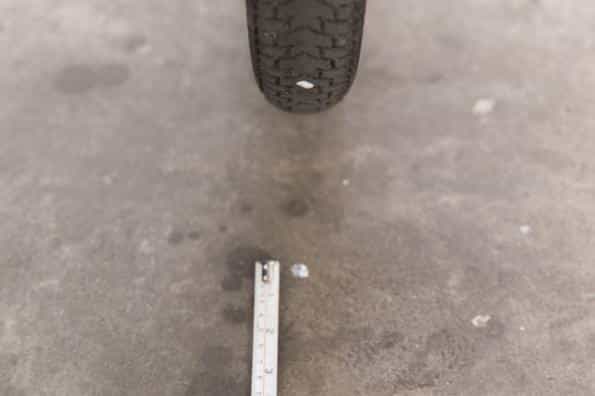
To check bike tire size using the ISO method, you will need a tape measure with metric units (mm).
If you don’t have the appropriate measuring item, just convert inches to millimeters by multiplying the number of inches by 25.4.
Step 2: Prop the Bike UpLike in the Standard Method, you must prop the bike using the wall for stability, or ask a friend to hold it. To measure the radius, use the exact instructions in the Standard Method.
Multiply the number by two to get the diameter of the bike wheel in millimeters.
Step 3: Measure the Width Using the ISO SystemUse the same process in measuring the width (its tread). However, measure the width in millimeters instead of inches.
You can use bike tires of different widths on the same bicycle wheel so long as the difference isn’t too stark.
Step 4: Finalize Your MeasurementsFor the ISO method, you should list the width first and the diameter second. For example, if your tire’s width is 40 millimeters and the diameter is 622 millimeters, your size would be written as 40-622.
For example, if your tire’s width is 40 millimeters and the diameter is 622 millimeters, your size would be written as 40-622.
For example, the most common width for a road bike wheel is around 23, 25, and 28 millimeters, while the most common width for a mountain bike is approximately 35, 38, and 40 millimeters.
#3: The Circumference MethodStep 1: Measure the CircumferenceThe circumference is the distance around the outside portion of a bike tire. It extends from the bike rims round to where it meets again.
You can measure the circumference using a tape measure or a piece of string and then measure the string with a ruler.
Step 2: Multiply the Diameter by PiThe circumference of a bike tire, or any circle in general, can be measured easily if you already know the diameter. All you have to do is multiply the diameter of the tire by pi (3.14)
For example, if the diameter of the bike tire is 28 inches, then the circumference would be 28 x 3. 14 = ~88 inches.
14 = ~88 inches.
Again, you can measure the circumference of the bike wheel by using a piece of string. This option is only viable when you still don’t know the diameter of the wheel.
To do this, wrap a string around the outside edge of the tire. Mark the spot of the string that meets the starting point.
Use a tape measure to determine the length of the string from the end to the mark. This will give you the circumference in inches or millimeters.
Step 4: Use the Roll MethodYou can also figure out the circumference of the bike wheel by using the old-fashioned way, also known as the Roll Method. This involves simply rolling the bike wheel until it makes one complete revolution.
Use chalk or a piece of tape to mark where the bike tire first touched the ground. Then, measure from that spot to where it meets again.
This will give you the circumference of the bike wheel in inches or millimeters, depending on how you measure it. At the same time, you can also measure the diameter of the wheel since you know how far it has traveled.
At the same time, you can also measure the diameter of the wheel since you know how far it has traveled.
Now that you know how to measure bike wheel size, it will be easier to find the right-size bike or tire for your needs. Since there are three reliable methods of measuring bike tire size, you won’t run out of options.
Just remember to take careful and precise measurements to avoid any errors. Accuracy is of utmost importance when measuring an MTB wheel or a child bike wheel.
With the right size, you’ll be able to enjoy your bike rides even more! So go ahead and determine bicycle tire size using the method of your choice!
Gary Johnson
“I ride my bike to work for years, but is that enough? Our carelessness towards our surroundings has taken a toll on the environment. And now, everyone is responsible for changes; even the most minor contribution is counted. With this hope and spirit, I started with my partner to establish Biketoworkday to help more individuals commute to their work sites on their bikes.”
And now, everyone is responsible for changes; even the most minor contribution is counted. With this hope and spirit, I started with my partner to establish Biketoworkday to help more individuals commute to their work sites on their bikes.”
Bicycle wheel sizes will have to be determined sooner or later: whether it is the purchase of an "iron horse" or the first replacement of a punctured tire. The dimensions of bicycle wheels are selected according to the height of the person and the future use of the bicycle.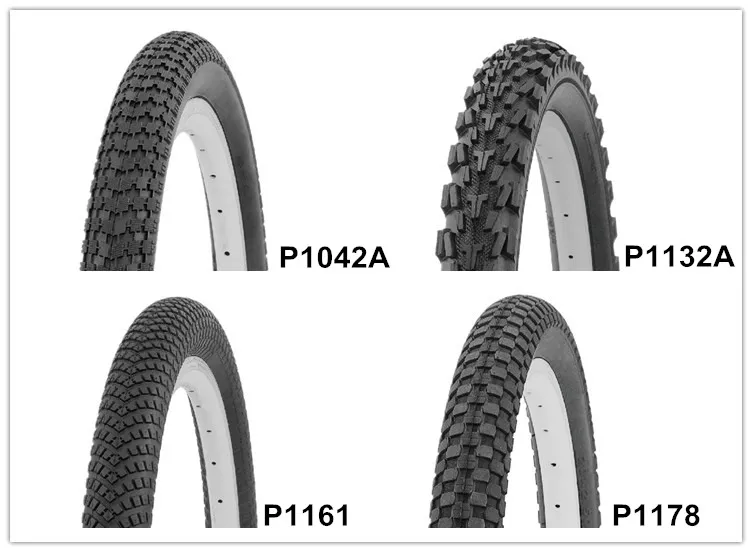 Each year, manufacturers produce bikes with seven basic wheel sizes:
Each year, manufacturers produce bikes with seven basic wheel sizes:

Choosing a bike model usually involves comparing two popular wheel sizes: 26-inch and 29-inch. Marketers to popularize 29-inch hybrids said that a larger wheel diameter makes the bike more stable and provides better rolling. In fact, these parameters depend more on the cyclist than on the “iron horse”.
Bicycle wheel diameter, frame size and height data - the secret formula for tips when choosing a bike. Knowing only your height, you can choose a bicycle frame. Main dimensions:
Changing wheels on a bicycle must always be accompanied by a calibration. For the correct calibration of the speedometer, odometer and especially the navigator, the exact value of the wheel diameter is needed.
Before you know the size of a bicycle wheel, pay attention to two simple rules:
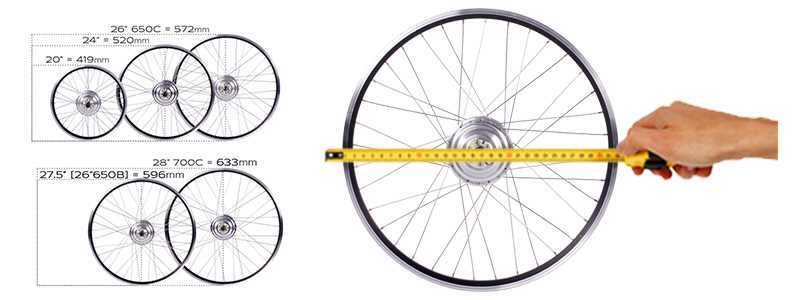
The easiest way to measure the diameter of a bicycle wheel is to measure the radius. We apply the ruler along the edge of the tire on one side and to the axis of the sleeve on the other. The resulting figure is the radius of the wheel. To find out the diameter of a bicycle wheel, multiply the radius by two. To get results in inches, divide the value in centimeters by 2.54. If the tire size is measured in inches, the marking is: diameter, then width.
Iron horse wheels can also be measured in the ISO system. In this case, we multiply the centimeters measured in a similar way by 10 to get the value in millimeters. Marking according to the ISO system: first the width, then the diameter.
To determine the circumference of a bicycle wheel, you will need a centimeter and a cable. We wrap the tire with a cable around the perimeter and make a mark at the junction. We unwind the cable and measure the length with a centimeter, which will be the diameter in centimeters.
There is another practical way to determine the size of a bicycle wheel. It is necessary to apply a drop of paint to the protector of the cover and carry the bike in a straight line. Two dots of paint will remain on the pavement, the distance between them will be the circumference of the wheel.
6 reasons to order from us
100% warranty of return
Only the original products
Discounts to regular customers
The courier of the online store
will deliver 2 sizes to choose
Tracking the status of order and delivery
Pre-receipt check
Nikolaev bicycle shop "Sportek"
Published: 04/07/2017
Edited: 07/15/2018
From time to time the question arises: “What is the diameter of the bicycle wheels?”
Most often, it pops up if a tire has broken through or new tires are needed on the wheel of an old bicycle. And to the seller’s question “What wheel does your bike have?” Only one answer comes to mind: “round”.
And to the seller’s question “What wheel does your bike have?” Only one answer comes to mind: “round”.
First of all, you need to define the concept of wheel diameter .
For most ordinary people, this is the diameter of the wheel at the outer (outer) border of the tire.
But there is also the concept of rim seat size - this is the diameter of the rim or tire itself along the inner border.
Therefore, it would be a good idea to first understand the world's tire labeling systems in order to speak the same language with the bike shop salesperson. You can read about this in the article "Bicycle tires: sizes, marking types and interchangeability" on our website.
For the sake of brevity, here is a figure explaining what is measured in each labeling system. Therefore, it is important to understand what we measure and what we want to find.
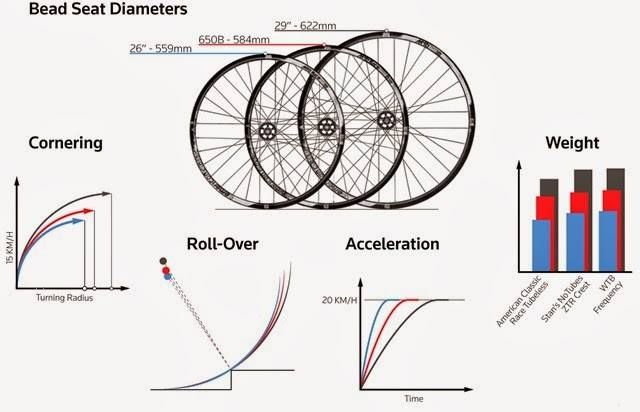 An old tire mounted on a bicycle, , should have its diameter written in inches or millimeters.
An old tire mounted on a bicycle, , should have its diameter written in inches or millimeters. When choosing a new rubber, be guided by it. If there is no tire with exactly the same marking, look at the interchangeability table and select the right size in another marking.
If a new tire is needed a little wider or narrower, check the tire and rim width chart.
If in doubt, talk to the salesperson. He will tell you if it is right for you, both in terms of size, tread, riding style and what kind of roads you want to ride.

This can be done by measuring the radius and multiplying it by two.
For younger students reading this article, I remind you that one diameter consists of two radii.
Only you need to measure strictly from the center of the sleeve, and not from its edges. When measuring, the bike should stand upright, and the tape measure, putting one end to the ground, keep the same strictly vertically, and not along the spokes of the wheel . Only such a measurement will give the correct value.
The wheel diameter itself can be measured in the same way. The main thing is to accurately determine its upper cut. To do this, you can take a level and attach it to the top of the tire, and, holding it strictly horizontally, determine the desired size from the tape measure.
After that, we convert it from mm to inches. To do this, divide it by 25.4 (1 inch = 25.4 mm) and calculate the size in inches. The result can be rounded up to standard inch wheel sizes.
For example, if the measurement is 720 mm, divide by 25.4 to get 28.346 inches. So, most likely, the actual size of the wheel, taking into account the accuracy of the calculations, is 28”.
In principle, the rim diameter can also be measured in the same way.
Just pay attention to the difference between what is measured on the outside of the tape measure and the fit size of the rim.
And knowing it, it is easy to calculate the diameter. To do this, the circumference in millimeters must be divided by the number "Pi" (3.14). Once you get the diameter in mm, divide it by 25.4 to get the diameter in inches. Similarly to the previous paragraph, the result will have to be rounded to the nearest whole number in inches.